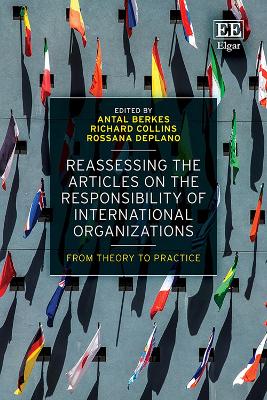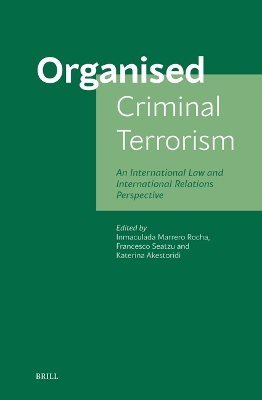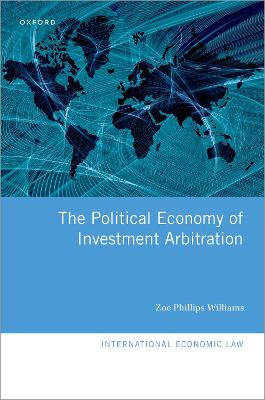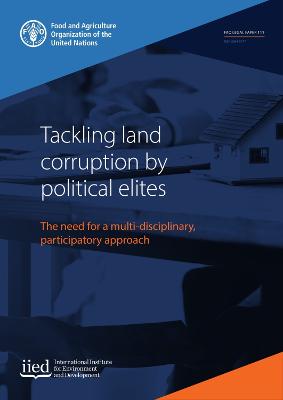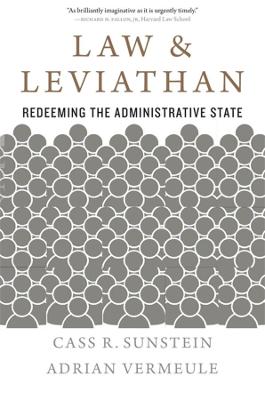State Succession to International Responsibility
 portes grátis
portes grátis
State Succession to International Responsibility
Second Edition
Dumberry, Patrick
Brill
09/2024
502
Dura
9789004703803
15 a 20 dias
Descrição não disponível.
????Foreword to the First Edition (2007)??
Acknowledgments to the Second Edition??
Abbreviations??
Part 1?
General Introduction?
?General Introduction of Part 1??
?1?The Issue Addressed in This Study
?2?The Objective of This Study
?3?Relevance of This Study When I Wrote the First Edition of This Book
?3.1?The Question Had Never Been Addressed by the ?ilc? or by Any International Law Scientific Institution??
?3.2?The Doctrinal Analysis Was Very Limited and Generally Unsatisfactory??
?4?Scope of This Study
?4.1?Meaning of State Succession??
?4.2?Classification of the Different Types of Succession of States??
?4.3?Fundamental Principles of State Responsibility in International Law??
?4.4?The Term "Internationally Wrongful Act" Should Be Used Instead of "Tort"??
?4.5?This Study Does Not Deal with the Regime of State Responsibility for Breaches of Rules of State Succession??
?4.6?This Study Does Not Deal with the Issues of "Odious Debts" and "War Damage" between the Predecessor State and the Successor State??
?4.7?This Study Does Not Deal with Internationally Wrongful Acts Committed by the Predecessor State against Its Own Nationals/Corporations??
?4.8?This Study Does Not Deal with Wrongs Committed by Non-state Actors??
Part 2?
Succession of States to the Obligation to Repair?
?General Introduction of Part 2??
1???Analysis of Scholarship??
?1?Introduction
?2?The Doctrine of Non-succession
?2.1?General Overview of the Doctrine??
?2.2?The Arguments Invoked in Support of the Doctrine??
?3?Challenges and Criticisms of the Doctrine of Non-succession
2???Analysis of State Practice and Case Law??
?1?Introductory Remarks on the Doctrinal Analysis of State Practice
?2?Incorporation of State
?2.1?Older Examples of Annexation of States Support the Principle of Non-succession??
?2.2?The Position Adopted in This Study and That of the Institute and the ?ilc???
?2.3?Modern State Practice Supports the Principle of Succession??
?3?Unification of States
?3.1?The Position Adopted in This Study and That of the Institute and the ?ilc???
?3.2?State Practice Supports the Principle of Succession??
?4?Dissolution of State
?4.1?The Position Adopted in This Study and That of the Institute and the ?ilc???
?4.2?Ancient State Practice Generally Supports the Principle of Non-succession??
?4.3?Modern State Practice Supports the Principle of Succession??
?5?Cession and Transfer of Territory
?5.1?The Position Adopted in This Study and That of the Institute and the ?ilc???
?5.2?The Continuing State Remains Responsible for Internationally Wrongful Acts Committed before the Date of Succession??
?5.3?A Special Case: Acts Committed by Autonomous Entities??
?6?Separation
?6.1?The Position Adopted in This Study and That of the Institute and the ?ilc???
?6.2?The Continuing State Remains Responsible for Internationally Wrongful Acts Committed before the Date of Succession??
?6.3?Examples Where the Principle of Succession Was Applied??
?7?Newly Independent States
?7.1?The Position Adopted in This Study and That of the Institute and the ?ilc???
?7.2?Examples Where the Continuing State Remained Responsible for Internationally Wrongful Acts Committed before the Date of Succession??
?7.3?Examples where the Successor State Took Over the Obligations Arising from the Commission of Internationally Wrongful Acts??
?8?Conclusion to Chapter 2
3???Analysis of Specific Issues??
?1?Introduction
?2?The Predecessor State Recognises Its Liability for an Internationally Wrongful Act
?3?A Judicial Body Finds the Predecessor State Responsible for an Internationally Wrongful Act
?4?The Successor State Accepts to Take Over the Responsibility for an Internationally Wrongful Act
?5?The Successor State Continues an Internationally Wrongful Act Committed by the Predecessor State
?5.1?Acts Committed by the Successor State after the Date of Succession??
?5.2?Acts Committed by the Predecessor State before the Date of Succession??
?6?An Insurrectional Movement Commits an Internationally Wrongful Act during its Struggle to Establish a New State
?7?An Autonomous Government Commits an Internationally Wrongful Act
?7.1?The Position Adopted by the Institute and the ?ilc???
?7.2?The Application of This Principle to Different Types of Succession??
?8?The Use of the Principle of Unjust Enrichment to Resolve Issues of Succession to Responsibility
?8.1?The Principle of Unjust Enrichment??
?8.2?The Principle Has Been Mentioned by Courts Dealing with Issues of State Succession??
?8.3?Analysis of Scholarship and the Position Adopted in This Study??
?8.4?Application of the Principle to Different Types of Succession of States??
?9?The Use of the Principle of Equity to Resolve Issues of Succession to Responsibility
?10?The Relevance of the Territorial Factor to Resolve Issues of Succession to Responsibility
?10.1?The Existence of a "Direct Link" between the Consequences of a Wrongful Act and a Territory??
?10.2?Violation of Territorial Regime Obligations??
?11?The Relevance of Treaty Succession to Resolve Issues of Succession to Responsibility
?12?Internationally Wrongful Acts Having a Special Character
?12.1?Commission of "Odious" Acts??
?12.2?Breach of jus cogens ?Norms
4???General Conclusion to Part 2??
Part 3?
Succession of States to the Right to Reparation?
?General Introduction of Part 3??
5???The Commission of an Internationally Wrongful Act Directly Affecting the Predecessor State??
?1?Introduction
?2?Analysis of Scholarship
?2.1?The Doctrine of Non-succession??
?2.2?Challenges and Criticisms of the Doctrine of Non-succession??
?3?Analysis of State Practice and Case Law
?3.1?Unification and Incorporation of States??
?3.2?Dissolution of State??
?3.3?Separation??
?3.4?Newly Independent States??
?4?Conclusion to Chapter 5
6???The Commission of an Internationally Wrongful Act Affecting a National of the Predecessor State??
?1?Introduction
?2?Analysis of Scholarship
?2.1?The Rule of Continuous Nationality in Diplomatic Protection??
?2.2?The Application of the Rule of Continuous Nationality in the Context of State Succession??
?2.3?The Parties Are Free to Exclude the Application of the Rule of Continuous Nationality??
?2.4?The Rule of Continuous Nationality Is Not Appropriate in the Context of State Succession??
?2.5?The Successor State Has a Right to Claim Reparation on Behalf of Its New Nationals for Internationally Wrongful Acts Committed before the Date of Succession??
?3?Analysis of State Practice and Case Law
?3.1?Cases Where Successor States Have Submitted Claims on Behalf of Their New Nationals??
?3.2?State Practice Where Reparation Was Provided to the Successor State for Its New Nationals??
?3.3?Cases Where the Rule of Continuous Nationality Was Applied??
?3.4?The Specific Problem of Reparation Claims against the Former State of Nationality??
?4?Conclusion to Chapter 6
Part 4?
General Conclusion?
?General Conclusion??
?1?The Foundations of the Doctrine of Non-succession Are Not as Solid as They Appear to Be
?2?The Doctrine of Non-succession Remains supported by Many States
?3?Succession to the Obligation to Repair Essentially Depends on the Type of Succession Involved and on Whether the Predecessor State Continues to Exist
?4?State Succession to the Obligation to Repair Depends on the Different Factors and Circumstances Involved in Each Case
?5?The Issue of State Succession to the Obligation to Repair should Ultimately be Resolved Based on the Application of Three Fundamental Equitable Principles
?6?Solutions to Problems of State Succession to the Obligation to Repair Remain Largely Based on the Consent of the Successor State
?7?The Successor State Has the Right to Claim Reparation for Internationally Wrongful Acts Committed by a Third State before the Date of Succession
?8?The Tendency in Favour of Continuity of Rights and Obligations Is in Accordance with Modern State Practice in Other Fields of State Succession
Annexes 1 to 3??
Index??
Acknowledgments to the Second Edition??
Abbreviations??
Part 1?
General Introduction?
?General Introduction of Part 1??
?1?The Issue Addressed in This Study
?2?The Objective of This Study
?3?Relevance of This Study When I Wrote the First Edition of This Book
?3.1?The Question Had Never Been Addressed by the ?ilc? or by Any International Law Scientific Institution??
?3.2?The Doctrinal Analysis Was Very Limited and Generally Unsatisfactory??
?4?Scope of This Study
?4.1?Meaning of State Succession??
?4.2?Classification of the Different Types of Succession of States??
?4.3?Fundamental Principles of State Responsibility in International Law??
?4.4?The Term "Internationally Wrongful Act" Should Be Used Instead of "Tort"??
?4.5?This Study Does Not Deal with the Regime of State Responsibility for Breaches of Rules of State Succession??
?4.6?This Study Does Not Deal with the Issues of "Odious Debts" and "War Damage" between the Predecessor State and the Successor State??
?4.7?This Study Does Not Deal with Internationally Wrongful Acts Committed by the Predecessor State against Its Own Nationals/Corporations??
?4.8?This Study Does Not Deal with Wrongs Committed by Non-state Actors??
Part 2?
Succession of States to the Obligation to Repair?
?General Introduction of Part 2??
1???Analysis of Scholarship??
?1?Introduction
?2?The Doctrine of Non-succession
?2.1?General Overview of the Doctrine??
?2.2?The Arguments Invoked in Support of the Doctrine??
?3?Challenges and Criticisms of the Doctrine of Non-succession
2???Analysis of State Practice and Case Law??
?1?Introductory Remarks on the Doctrinal Analysis of State Practice
?2?Incorporation of State
?2.1?Older Examples of Annexation of States Support the Principle of Non-succession??
?2.2?The Position Adopted in This Study and That of the Institute and the ?ilc???
?2.3?Modern State Practice Supports the Principle of Succession??
?3?Unification of States
?3.1?The Position Adopted in This Study and That of the Institute and the ?ilc???
?3.2?State Practice Supports the Principle of Succession??
?4?Dissolution of State
?4.1?The Position Adopted in This Study and That of the Institute and the ?ilc???
?4.2?Ancient State Practice Generally Supports the Principle of Non-succession??
?4.3?Modern State Practice Supports the Principle of Succession??
?5?Cession and Transfer of Territory
?5.1?The Position Adopted in This Study and That of the Institute and the ?ilc???
?5.2?The Continuing State Remains Responsible for Internationally Wrongful Acts Committed before the Date of Succession??
?5.3?A Special Case: Acts Committed by Autonomous Entities??
?6?Separation
?6.1?The Position Adopted in This Study and That of the Institute and the ?ilc???
?6.2?The Continuing State Remains Responsible for Internationally Wrongful Acts Committed before the Date of Succession??
?6.3?Examples Where the Principle of Succession Was Applied??
?7?Newly Independent States
?7.1?The Position Adopted in This Study and That of the Institute and the ?ilc???
?7.2?Examples Where the Continuing State Remained Responsible for Internationally Wrongful Acts Committed before the Date of Succession??
?7.3?Examples where the Successor State Took Over the Obligations Arising from the Commission of Internationally Wrongful Acts??
?8?Conclusion to Chapter 2
3???Analysis of Specific Issues??
?1?Introduction
?2?The Predecessor State Recognises Its Liability for an Internationally Wrongful Act
?3?A Judicial Body Finds the Predecessor State Responsible for an Internationally Wrongful Act
?4?The Successor State Accepts to Take Over the Responsibility for an Internationally Wrongful Act
?5?The Successor State Continues an Internationally Wrongful Act Committed by the Predecessor State
?5.1?Acts Committed by the Successor State after the Date of Succession??
?5.2?Acts Committed by the Predecessor State before the Date of Succession??
?6?An Insurrectional Movement Commits an Internationally Wrongful Act during its Struggle to Establish a New State
?7?An Autonomous Government Commits an Internationally Wrongful Act
?7.1?The Position Adopted by the Institute and the ?ilc???
?7.2?The Application of This Principle to Different Types of Succession??
?8?The Use of the Principle of Unjust Enrichment to Resolve Issues of Succession to Responsibility
?8.1?The Principle of Unjust Enrichment??
?8.2?The Principle Has Been Mentioned by Courts Dealing with Issues of State Succession??
?8.3?Analysis of Scholarship and the Position Adopted in This Study??
?8.4?Application of the Principle to Different Types of Succession of States??
?9?The Use of the Principle of Equity to Resolve Issues of Succession to Responsibility
?10?The Relevance of the Territorial Factor to Resolve Issues of Succession to Responsibility
?10.1?The Existence of a "Direct Link" between the Consequences of a Wrongful Act and a Territory??
?10.2?Violation of Territorial Regime Obligations??
?11?The Relevance of Treaty Succession to Resolve Issues of Succession to Responsibility
?12?Internationally Wrongful Acts Having a Special Character
?12.1?Commission of "Odious" Acts??
?12.2?Breach of jus cogens ?Norms
4???General Conclusion to Part 2??
Part 3?
Succession of States to the Right to Reparation?
?General Introduction of Part 3??
5???The Commission of an Internationally Wrongful Act Directly Affecting the Predecessor State??
?1?Introduction
?2?Analysis of Scholarship
?2.1?The Doctrine of Non-succession??
?2.2?Challenges and Criticisms of the Doctrine of Non-succession??
?3?Analysis of State Practice and Case Law
?3.1?Unification and Incorporation of States??
?3.2?Dissolution of State??
?3.3?Separation??
?3.4?Newly Independent States??
?4?Conclusion to Chapter 5
6???The Commission of an Internationally Wrongful Act Affecting a National of the Predecessor State??
?1?Introduction
?2?Analysis of Scholarship
?2.1?The Rule of Continuous Nationality in Diplomatic Protection??
?2.2?The Application of the Rule of Continuous Nationality in the Context of State Succession??
?2.3?The Parties Are Free to Exclude the Application of the Rule of Continuous Nationality??
?2.4?The Rule of Continuous Nationality Is Not Appropriate in the Context of State Succession??
?2.5?The Successor State Has a Right to Claim Reparation on Behalf of Its New Nationals for Internationally Wrongful Acts Committed before the Date of Succession??
?3?Analysis of State Practice and Case Law
?3.1?Cases Where Successor States Have Submitted Claims on Behalf of Their New Nationals??
?3.2?State Practice Where Reparation Was Provided to the Successor State for Its New Nationals??
?3.3?Cases Where the Rule of Continuous Nationality Was Applied??
?3.4?The Specific Problem of Reparation Claims against the Former State of Nationality??
?4?Conclusion to Chapter 6
Part 4?
General Conclusion?
?General Conclusion??
?1?The Foundations of the Doctrine of Non-succession Are Not as Solid as They Appear to Be
?2?The Doctrine of Non-succession Remains supported by Many States
?3?Succession to the Obligation to Repair Essentially Depends on the Type of Succession Involved and on Whether the Predecessor State Continues to Exist
?4?State Succession to the Obligation to Repair Depends on the Different Factors and Circumstances Involved in Each Case
?5?The Issue of State Succession to the Obligation to Repair should Ultimately be Resolved Based on the Application of Three Fundamental Equitable Principles
?6?Solutions to Problems of State Succession to the Obligation to Repair Remain Largely Based on the Consent of the Successor State
?7?The Successor State Has the Right to Claim Reparation for Internationally Wrongful Acts Committed by a Third State before the Date of Succession
?8?The Tendency in Favour of Continuity of Rights and Obligations Is in Accordance with Modern State Practice in Other Fields of State Succession
Annexes 1 to 3??
Index??
Este título pertence ao(s) assunto(s) indicados(s). Para ver outros títulos clique no assunto desejado.
????Foreword to the First Edition (2007)??
Acknowledgments to the Second Edition??
Abbreviations??
Part 1?
General Introduction?
?General Introduction of Part 1??
?1?The Issue Addressed in This Study
?2?The Objective of This Study
?3?Relevance of This Study When I Wrote the First Edition of This Book
?3.1?The Question Had Never Been Addressed by the ?ilc? or by Any International Law Scientific Institution??
?3.2?The Doctrinal Analysis Was Very Limited and Generally Unsatisfactory??
?4?Scope of This Study
?4.1?Meaning of State Succession??
?4.2?Classification of the Different Types of Succession of States??
?4.3?Fundamental Principles of State Responsibility in International Law??
?4.4?The Term "Internationally Wrongful Act" Should Be Used Instead of "Tort"??
?4.5?This Study Does Not Deal with the Regime of State Responsibility for Breaches of Rules of State Succession??
?4.6?This Study Does Not Deal with the Issues of "Odious Debts" and "War Damage" between the Predecessor State and the Successor State??
?4.7?This Study Does Not Deal with Internationally Wrongful Acts Committed by the Predecessor State against Its Own Nationals/Corporations??
?4.8?This Study Does Not Deal with Wrongs Committed by Non-state Actors??
Part 2?
Succession of States to the Obligation to Repair?
?General Introduction of Part 2??
1???Analysis of Scholarship??
?1?Introduction
?2?The Doctrine of Non-succession
?2.1?General Overview of the Doctrine??
?2.2?The Arguments Invoked in Support of the Doctrine??
?3?Challenges and Criticisms of the Doctrine of Non-succession
2???Analysis of State Practice and Case Law??
?1?Introductory Remarks on the Doctrinal Analysis of State Practice
?2?Incorporation of State
?2.1?Older Examples of Annexation of States Support the Principle of Non-succession??
?2.2?The Position Adopted in This Study and That of the Institute and the ?ilc???
?2.3?Modern State Practice Supports the Principle of Succession??
?3?Unification of States
?3.1?The Position Adopted in This Study and That of the Institute and the ?ilc???
?3.2?State Practice Supports the Principle of Succession??
?4?Dissolution of State
?4.1?The Position Adopted in This Study and That of the Institute and the ?ilc???
?4.2?Ancient State Practice Generally Supports the Principle of Non-succession??
?4.3?Modern State Practice Supports the Principle of Succession??
?5?Cession and Transfer of Territory
?5.1?The Position Adopted in This Study and That of the Institute and the ?ilc???
?5.2?The Continuing State Remains Responsible for Internationally Wrongful Acts Committed before the Date of Succession??
?5.3?A Special Case: Acts Committed by Autonomous Entities??
?6?Separation
?6.1?The Position Adopted in This Study and That of the Institute and the ?ilc???
?6.2?The Continuing State Remains Responsible for Internationally Wrongful Acts Committed before the Date of Succession??
?6.3?Examples Where the Principle of Succession Was Applied??
?7?Newly Independent States
?7.1?The Position Adopted in This Study and That of the Institute and the ?ilc???
?7.2?Examples Where the Continuing State Remained Responsible for Internationally Wrongful Acts Committed before the Date of Succession??
?7.3?Examples where the Successor State Took Over the Obligations Arising from the Commission of Internationally Wrongful Acts??
?8?Conclusion to Chapter 2
3???Analysis of Specific Issues??
?1?Introduction
?2?The Predecessor State Recognises Its Liability for an Internationally Wrongful Act
?3?A Judicial Body Finds the Predecessor State Responsible for an Internationally Wrongful Act
?4?The Successor State Accepts to Take Over the Responsibility for an Internationally Wrongful Act
?5?The Successor State Continues an Internationally Wrongful Act Committed by the Predecessor State
?5.1?Acts Committed by the Successor State after the Date of Succession??
?5.2?Acts Committed by the Predecessor State before the Date of Succession??
?6?An Insurrectional Movement Commits an Internationally Wrongful Act during its Struggle to Establish a New State
?7?An Autonomous Government Commits an Internationally Wrongful Act
?7.1?The Position Adopted by the Institute and the ?ilc???
?7.2?The Application of This Principle to Different Types of Succession??
?8?The Use of the Principle of Unjust Enrichment to Resolve Issues of Succession to Responsibility
?8.1?The Principle of Unjust Enrichment??
?8.2?The Principle Has Been Mentioned by Courts Dealing with Issues of State Succession??
?8.3?Analysis of Scholarship and the Position Adopted in This Study??
?8.4?Application of the Principle to Different Types of Succession of States??
?9?The Use of the Principle of Equity to Resolve Issues of Succession to Responsibility
?10?The Relevance of the Territorial Factor to Resolve Issues of Succession to Responsibility
?10.1?The Existence of a "Direct Link" between the Consequences of a Wrongful Act and a Territory??
?10.2?Violation of Territorial Regime Obligations??
?11?The Relevance of Treaty Succession to Resolve Issues of Succession to Responsibility
?12?Internationally Wrongful Acts Having a Special Character
?12.1?Commission of "Odious" Acts??
?12.2?Breach of jus cogens ?Norms
4???General Conclusion to Part 2??
Part 3?
Succession of States to the Right to Reparation?
?General Introduction of Part 3??
5???The Commission of an Internationally Wrongful Act Directly Affecting the Predecessor State??
?1?Introduction
?2?Analysis of Scholarship
?2.1?The Doctrine of Non-succession??
?2.2?Challenges and Criticisms of the Doctrine of Non-succession??
?3?Analysis of State Practice and Case Law
?3.1?Unification and Incorporation of States??
?3.2?Dissolution of State??
?3.3?Separation??
?3.4?Newly Independent States??
?4?Conclusion to Chapter 5
6???The Commission of an Internationally Wrongful Act Affecting a National of the Predecessor State??
?1?Introduction
?2?Analysis of Scholarship
?2.1?The Rule of Continuous Nationality in Diplomatic Protection??
?2.2?The Application of the Rule of Continuous Nationality in the Context of State Succession??
?2.3?The Parties Are Free to Exclude the Application of the Rule of Continuous Nationality??
?2.4?The Rule of Continuous Nationality Is Not Appropriate in the Context of State Succession??
?2.5?The Successor State Has a Right to Claim Reparation on Behalf of Its New Nationals for Internationally Wrongful Acts Committed before the Date of Succession??
?3?Analysis of State Practice and Case Law
?3.1?Cases Where Successor States Have Submitted Claims on Behalf of Their New Nationals??
?3.2?State Practice Where Reparation Was Provided to the Successor State for Its New Nationals??
?3.3?Cases Where the Rule of Continuous Nationality Was Applied??
?3.4?The Specific Problem of Reparation Claims against the Former State of Nationality??
?4?Conclusion to Chapter 6
Part 4?
General Conclusion?
?General Conclusion??
?1?The Foundations of the Doctrine of Non-succession Are Not as Solid as They Appear to Be
?2?The Doctrine of Non-succession Remains supported by Many States
?3?Succession to the Obligation to Repair Essentially Depends on the Type of Succession Involved and on Whether the Predecessor State Continues to Exist
?4?State Succession to the Obligation to Repair Depends on the Different Factors and Circumstances Involved in Each Case
?5?The Issue of State Succession to the Obligation to Repair should Ultimately be Resolved Based on the Application of Three Fundamental Equitable Principles
?6?Solutions to Problems of State Succession to the Obligation to Repair Remain Largely Based on the Consent of the Successor State
?7?The Successor State Has the Right to Claim Reparation for Internationally Wrongful Acts Committed by a Third State before the Date of Succession
?8?The Tendency in Favour of Continuity of Rights and Obligations Is in Accordance with Modern State Practice in Other Fields of State Succession
Annexes 1 to 3??
Index??
Acknowledgments to the Second Edition??
Abbreviations??
Part 1?
General Introduction?
?General Introduction of Part 1??
?1?The Issue Addressed in This Study
?2?The Objective of This Study
?3?Relevance of This Study When I Wrote the First Edition of This Book
?3.1?The Question Had Never Been Addressed by the ?ilc? or by Any International Law Scientific Institution??
?3.2?The Doctrinal Analysis Was Very Limited and Generally Unsatisfactory??
?4?Scope of This Study
?4.1?Meaning of State Succession??
?4.2?Classification of the Different Types of Succession of States??
?4.3?Fundamental Principles of State Responsibility in International Law??
?4.4?The Term "Internationally Wrongful Act" Should Be Used Instead of "Tort"??
?4.5?This Study Does Not Deal with the Regime of State Responsibility for Breaches of Rules of State Succession??
?4.6?This Study Does Not Deal with the Issues of "Odious Debts" and "War Damage" between the Predecessor State and the Successor State??
?4.7?This Study Does Not Deal with Internationally Wrongful Acts Committed by the Predecessor State against Its Own Nationals/Corporations??
?4.8?This Study Does Not Deal with Wrongs Committed by Non-state Actors??
Part 2?
Succession of States to the Obligation to Repair?
?General Introduction of Part 2??
1???Analysis of Scholarship??
?1?Introduction
?2?The Doctrine of Non-succession
?2.1?General Overview of the Doctrine??
?2.2?The Arguments Invoked in Support of the Doctrine??
?3?Challenges and Criticisms of the Doctrine of Non-succession
2???Analysis of State Practice and Case Law??
?1?Introductory Remarks on the Doctrinal Analysis of State Practice
?2?Incorporation of State
?2.1?Older Examples of Annexation of States Support the Principle of Non-succession??
?2.2?The Position Adopted in This Study and That of the Institute and the ?ilc???
?2.3?Modern State Practice Supports the Principle of Succession??
?3?Unification of States
?3.1?The Position Adopted in This Study and That of the Institute and the ?ilc???
?3.2?State Practice Supports the Principle of Succession??
?4?Dissolution of State
?4.1?The Position Adopted in This Study and That of the Institute and the ?ilc???
?4.2?Ancient State Practice Generally Supports the Principle of Non-succession??
?4.3?Modern State Practice Supports the Principle of Succession??
?5?Cession and Transfer of Territory
?5.1?The Position Adopted in This Study and That of the Institute and the ?ilc???
?5.2?The Continuing State Remains Responsible for Internationally Wrongful Acts Committed before the Date of Succession??
?5.3?A Special Case: Acts Committed by Autonomous Entities??
?6?Separation
?6.1?The Position Adopted in This Study and That of the Institute and the ?ilc???
?6.2?The Continuing State Remains Responsible for Internationally Wrongful Acts Committed before the Date of Succession??
?6.3?Examples Where the Principle of Succession Was Applied??
?7?Newly Independent States
?7.1?The Position Adopted in This Study and That of the Institute and the ?ilc???
?7.2?Examples Where the Continuing State Remained Responsible for Internationally Wrongful Acts Committed before the Date of Succession??
?7.3?Examples where the Successor State Took Over the Obligations Arising from the Commission of Internationally Wrongful Acts??
?8?Conclusion to Chapter 2
3???Analysis of Specific Issues??
?1?Introduction
?2?The Predecessor State Recognises Its Liability for an Internationally Wrongful Act
?3?A Judicial Body Finds the Predecessor State Responsible for an Internationally Wrongful Act
?4?The Successor State Accepts to Take Over the Responsibility for an Internationally Wrongful Act
?5?The Successor State Continues an Internationally Wrongful Act Committed by the Predecessor State
?5.1?Acts Committed by the Successor State after the Date of Succession??
?5.2?Acts Committed by the Predecessor State before the Date of Succession??
?6?An Insurrectional Movement Commits an Internationally Wrongful Act during its Struggle to Establish a New State
?7?An Autonomous Government Commits an Internationally Wrongful Act
?7.1?The Position Adopted by the Institute and the ?ilc???
?7.2?The Application of This Principle to Different Types of Succession??
?8?The Use of the Principle of Unjust Enrichment to Resolve Issues of Succession to Responsibility
?8.1?The Principle of Unjust Enrichment??
?8.2?The Principle Has Been Mentioned by Courts Dealing with Issues of State Succession??
?8.3?Analysis of Scholarship and the Position Adopted in This Study??
?8.4?Application of the Principle to Different Types of Succession of States??
?9?The Use of the Principle of Equity to Resolve Issues of Succession to Responsibility
?10?The Relevance of the Territorial Factor to Resolve Issues of Succession to Responsibility
?10.1?The Existence of a "Direct Link" between the Consequences of a Wrongful Act and a Territory??
?10.2?Violation of Territorial Regime Obligations??
?11?The Relevance of Treaty Succession to Resolve Issues of Succession to Responsibility
?12?Internationally Wrongful Acts Having a Special Character
?12.1?Commission of "Odious" Acts??
?12.2?Breach of jus cogens ?Norms
4???General Conclusion to Part 2??
Part 3?
Succession of States to the Right to Reparation?
?General Introduction of Part 3??
5???The Commission of an Internationally Wrongful Act Directly Affecting the Predecessor State??
?1?Introduction
?2?Analysis of Scholarship
?2.1?The Doctrine of Non-succession??
?2.2?Challenges and Criticisms of the Doctrine of Non-succession??
?3?Analysis of State Practice and Case Law
?3.1?Unification and Incorporation of States??
?3.2?Dissolution of State??
?3.3?Separation??
?3.4?Newly Independent States??
?4?Conclusion to Chapter 5
6???The Commission of an Internationally Wrongful Act Affecting a National of the Predecessor State??
?1?Introduction
?2?Analysis of Scholarship
?2.1?The Rule of Continuous Nationality in Diplomatic Protection??
?2.2?The Application of the Rule of Continuous Nationality in the Context of State Succession??
?2.3?The Parties Are Free to Exclude the Application of the Rule of Continuous Nationality??
?2.4?The Rule of Continuous Nationality Is Not Appropriate in the Context of State Succession??
?2.5?The Successor State Has a Right to Claim Reparation on Behalf of Its New Nationals for Internationally Wrongful Acts Committed before the Date of Succession??
?3?Analysis of State Practice and Case Law
?3.1?Cases Where Successor States Have Submitted Claims on Behalf of Their New Nationals??
?3.2?State Practice Where Reparation Was Provided to the Successor State for Its New Nationals??
?3.3?Cases Where the Rule of Continuous Nationality Was Applied??
?3.4?The Specific Problem of Reparation Claims against the Former State of Nationality??
?4?Conclusion to Chapter 6
Part 4?
General Conclusion?
?General Conclusion??
?1?The Foundations of the Doctrine of Non-succession Are Not as Solid as They Appear to Be
?2?The Doctrine of Non-succession Remains supported by Many States
?3?Succession to the Obligation to Repair Essentially Depends on the Type of Succession Involved and on Whether the Predecessor State Continues to Exist
?4?State Succession to the Obligation to Repair Depends on the Different Factors and Circumstances Involved in Each Case
?5?The Issue of State Succession to the Obligation to Repair should Ultimately be Resolved Based on the Application of Three Fundamental Equitable Principles
?6?Solutions to Problems of State Succession to the Obligation to Repair Remain Largely Based on the Consent of the Successor State
?7?The Successor State Has the Right to Claim Reparation for Internationally Wrongful Acts Committed by a Third State before the Date of Succession
?8?The Tendency in Favour of Continuity of Rights and Obligations Is in Accordance with Modern State Practice in Other Fields of State Succession
Annexes 1 to 3??
Index??
Este título pertence ao(s) assunto(s) indicados(s). Para ver outros títulos clique no assunto desejado.

